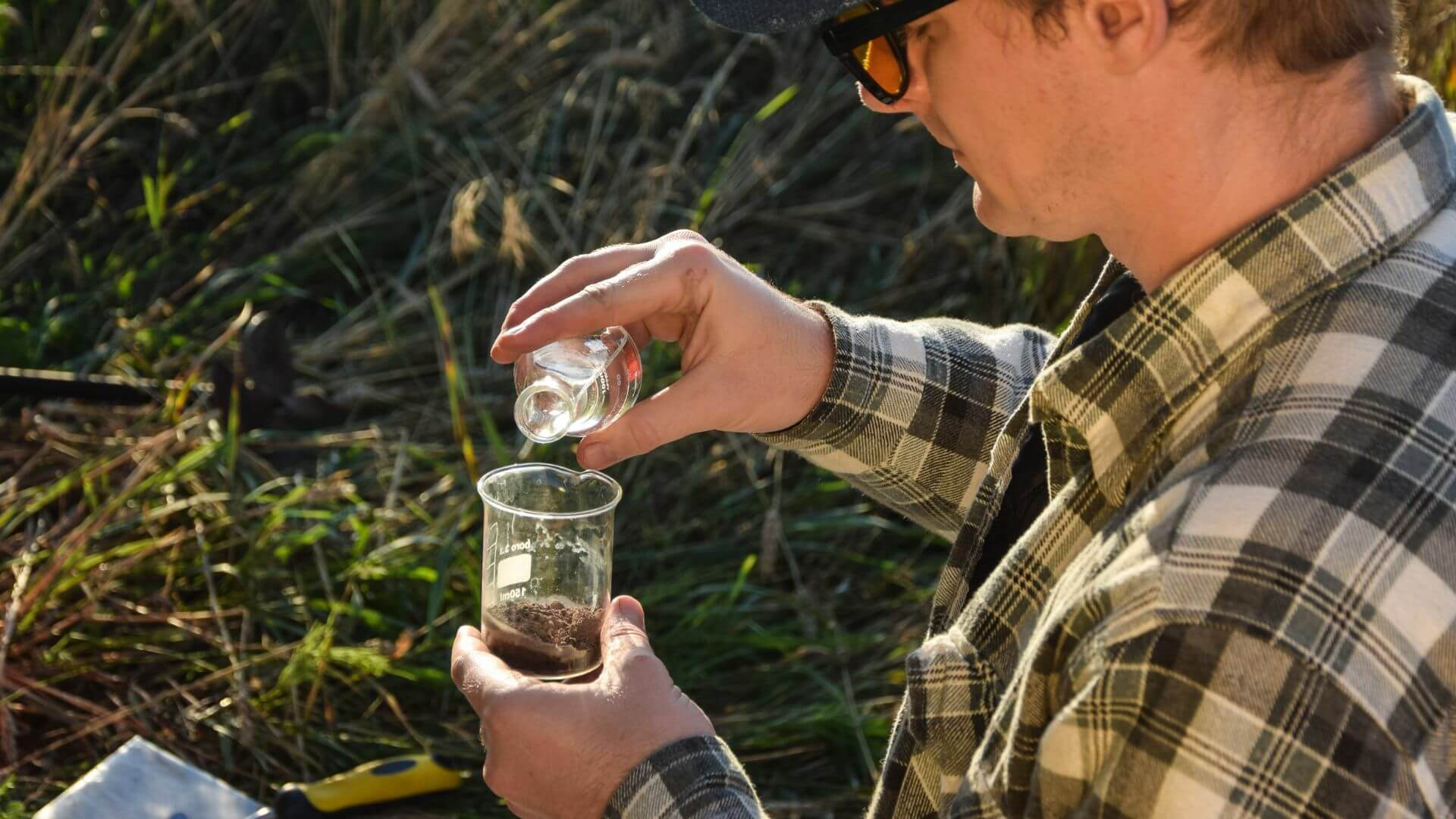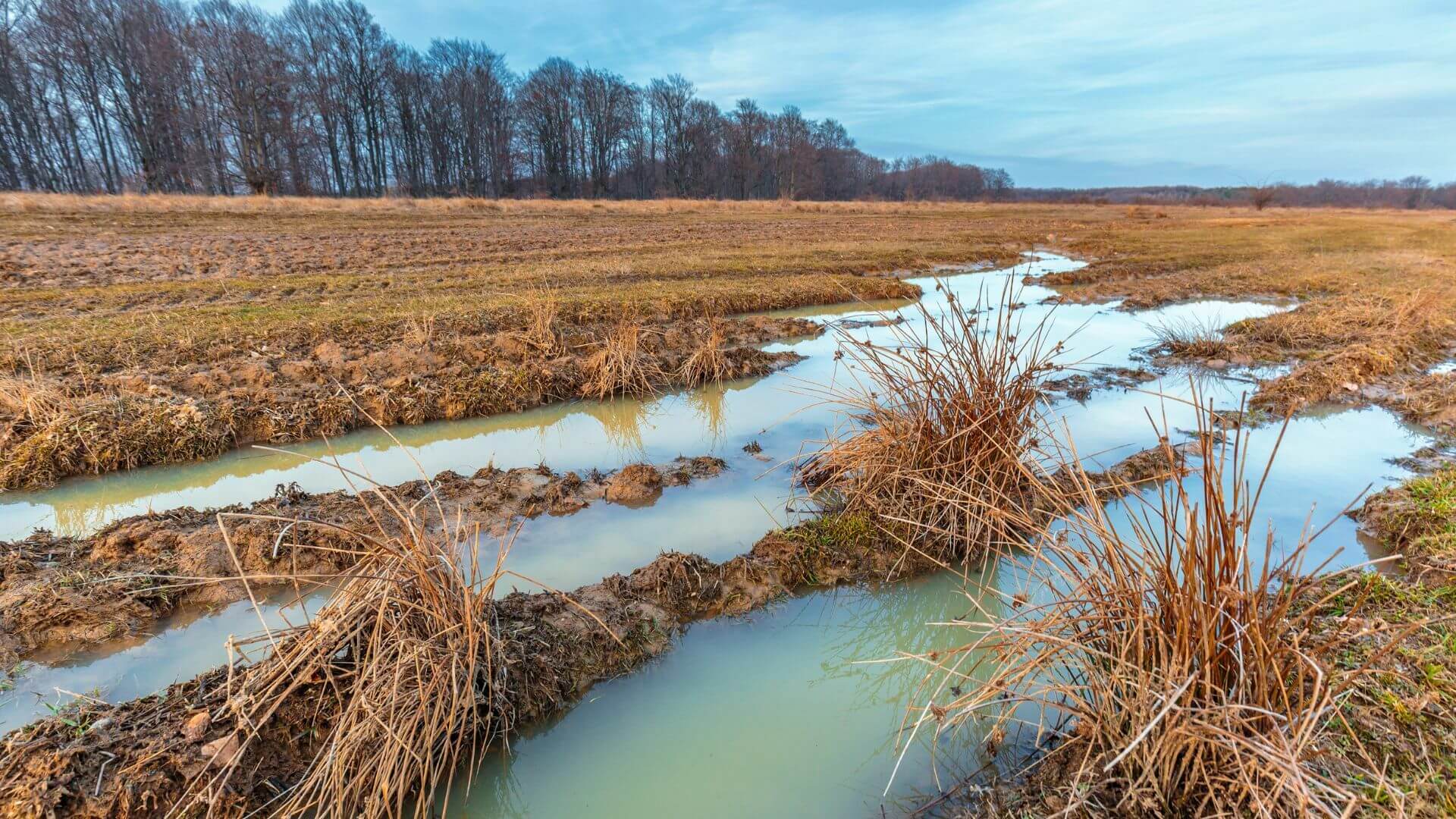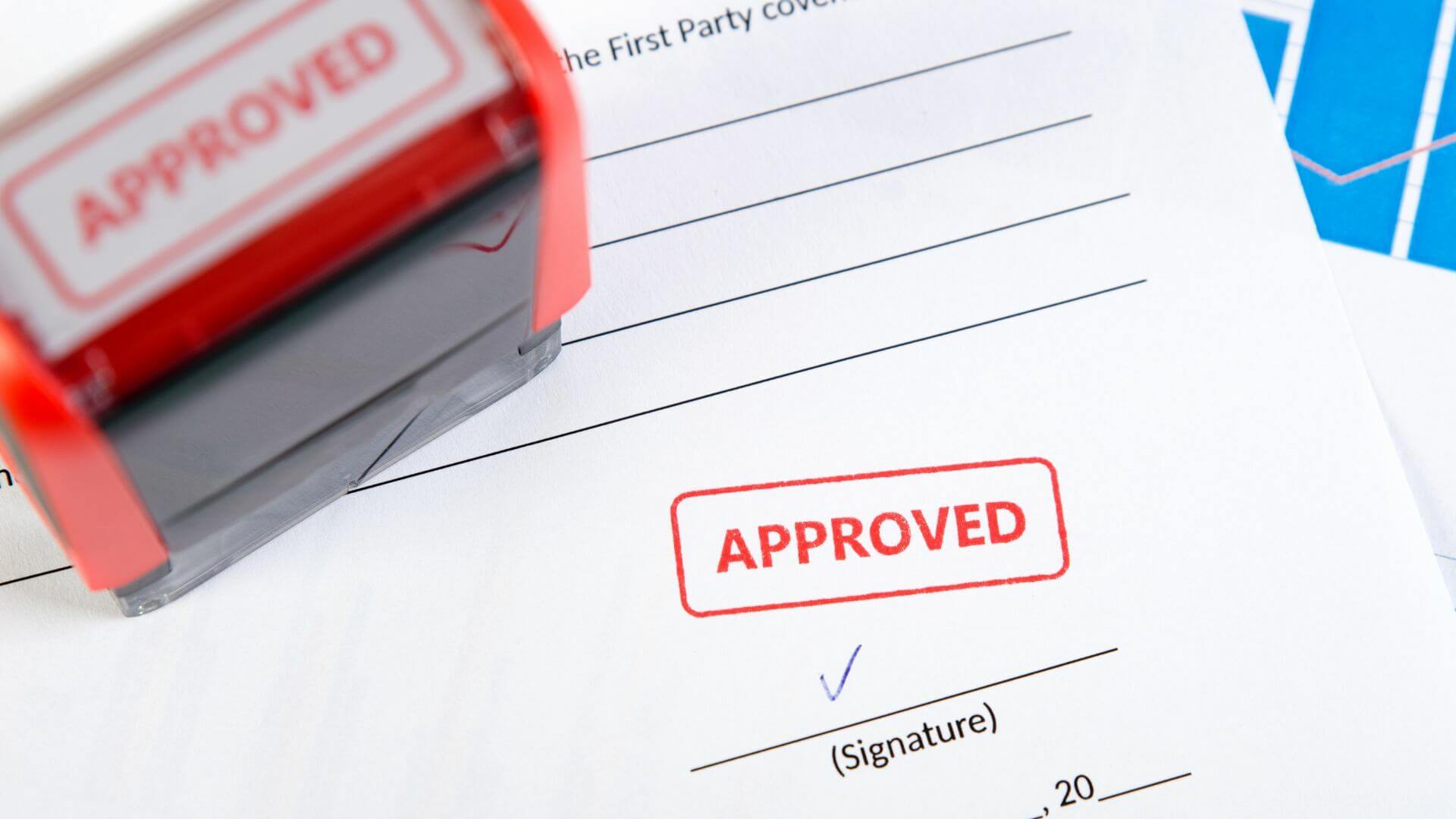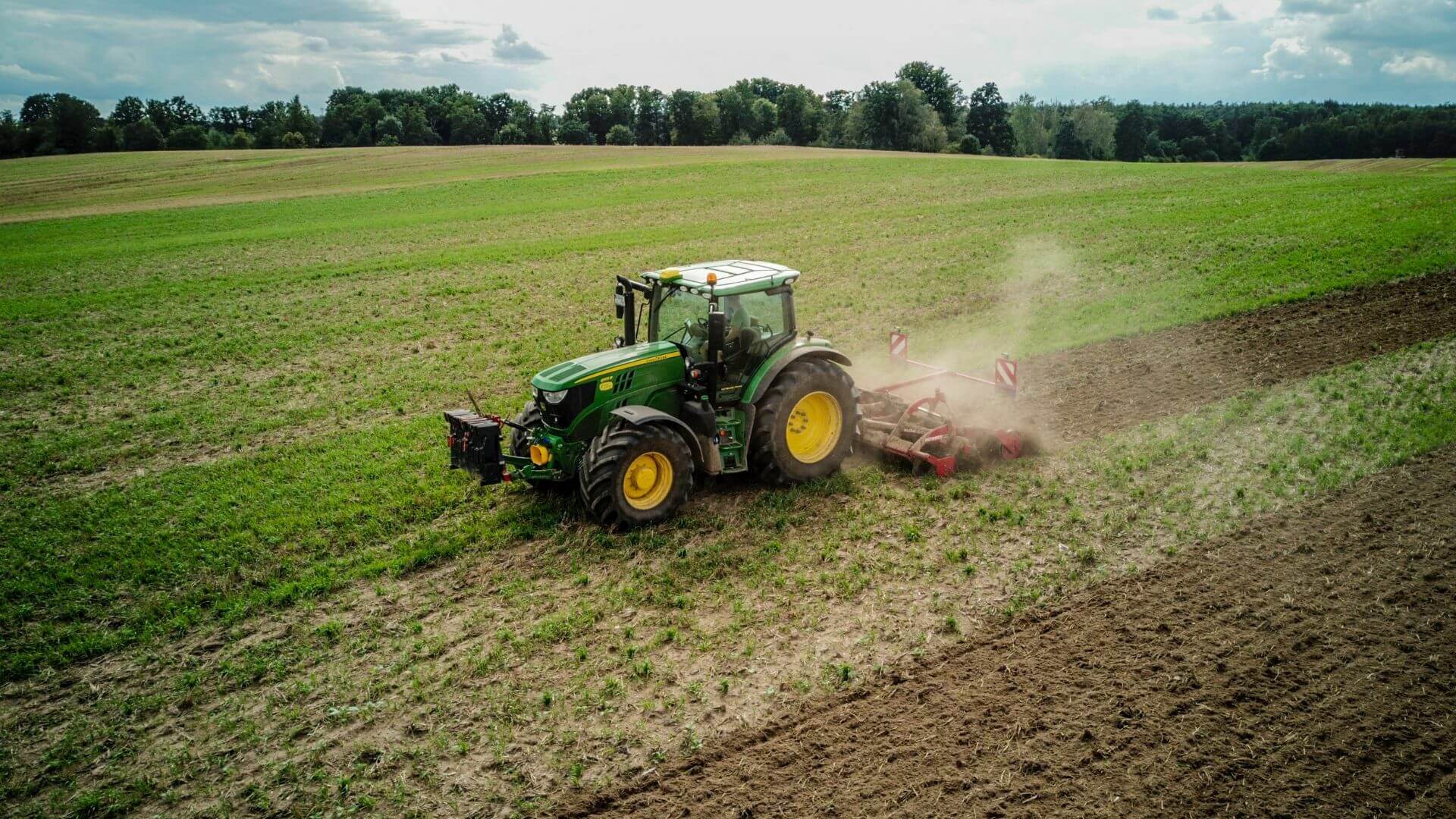Michigan’s frosty winters leave behind more than just muddy boots and soggy driveways. They shape the land in ways most folks don’t even realize—until they try to plant something or build on it.
So if you’ve got a property here in the Great Lakes State and you’re gearing up to farm, build, or just get things cleaned up this spring… you’re in the right place.
At Michigan Whitetail Properties, we’ve been walking Michigan land for over 23 years. From the rugged woods of the UP to rolling farmland in the Lower Peninsula, we’ve seen it all— the good, bad, and the muddy. This guide pulls together the best tips, resources, and real-life examples to help you set your land up for success this season.
We’re talking everything from soil testing and permits, to flood-prevention fixes, to the kind of practical tools that actually get the job done. Let’s dig in.
🧪 Step 1: Test Your Soil Like a Pro (Before You Plant a Single Seed)
 Look, we know—soil testing isn’t the most glamorous part of land prep. But it’s crazy important. Skipping this step is like baking bread without knowing if your flour’s expired.
Look, we know—soil testing isn’t the most glamorous part of land prep. But it’s crazy important. Skipping this step is like baking bread without knowing if your flour’s expired.
Michigan soil is, let’s just say… quirky. Glaciers gave us some pretty wild mixes: dense clay down in Monroe, light sandy stuff up in Marquette. What that means for you? No two plots are the same. One side of your property might grow tomatoes like a dream, while the other side struggles with weeds and yellow leaves.
Here’s what to do:
-
Grab a DIY test kit at your local farm store (they’re about $25–30).
-
Or, better yet, send a sample to MSU Extension’s lab. It’s super affordable (around $25–50), and they’ll give you a full nutrient breakdown, pH levels, and what to add or adjust based on what you want to grow.
Here’s a quick cheat sheet for ideal pH levels:
-
Blueberries: 4.5–5.5 (yep, they like it acidic)
-
Corn: 6.0–6.5
-
Soybeans: 6.2–6.8
-
Pasture/Hay: 6.0–7.0
Getting this right can seriously boost your yield—and save you a bunch of money on guesswork later.
🚜 Step 2: Fix Drainage Issues (Before Spring Rains Flood Your Plans)
 Let’s talk about mud. Or, more specifically, that “Michigan spring” kind of mud that turns your land into a sloppy soup.
Let’s talk about mud. Or, more specifically, that “Michigan spring” kind of mud that turns your land into a sloppy soup.
Our state gets a ton of snow, and when it melts? If your property doesn’t drain well, you’re looking at delays, washed-out seed, and even foundation damage.
Some common headaches we see:
-
Clay-heavy soils in places like Oakland County that hold onto water like a sponge.
-
Hills or slopes in Grand Traverse that funnel rain straight into low spots—right where you were hoping to plant your garden or put up a barn.
Here’s how to tackle it:![]()
-
French Drains: These are great for tight areas or gardens—expect to spend about $1,500 to $3,000.
-
Dry Creek Beds: Super pretty and functional. They guide water naturally and work great for larger plots.
-
Grading: Recontouring land takes equipment and expertise, but it’s one of the best long-term fixes.
💡 Real Example: A small vineyard up in Grand Traverse County had chronic flooding. Instead of tearing everything up, they brought in a local contractor to regrade the slope and install a 300-foot dry creek bed. Cost them a chunk of change up front… but they avoided $20,000 in water damage the following season.
“Always check your property for existing county drainage easements before you start anything,” says Jake Miller, a USDA land consultant. “I’ve seen people accidentally redirect runoff onto their neighbor’s land—and trust me, that’s not a fun phone call.”
📋 Step 3: Navigate Michigan’s Permits & Zoning (Without the Headache)
 No one likes red tape—but if you’re planning to farm or build, you’ve got to deal with it. Michigan has some strict rules, especially when it comes to wetlands, livestock, and land development.
No one likes red tape—but if you’re planning to farm or build, you’ve got to deal with it. Michigan has some strict rules, especially when it comes to wetlands, livestock, and land development.
Miss a form? You could end up with a stalled project or a big fine. Not ideal.
The essentials:
-
AG-USE Permits: If you’re raising livestock on a small parcel (under 50 acres), check with MDARD.
-
Wetland Compliance: Michigan protects a lot of wetlands—about 40% of the state is regulated. Use Michigan’s Wetlands Map Viewer to see if your property’s impacted.
-
Zoning Approval: Especially critical if you’re converting your land from residential to ag use (or vice versa).
Quick links to save you time:
🛠️ Tools & Gear: What Michigan Landowners Actually Need (No Wasted $$$)
 You don’t need to spend your life savings on gear—but the right tools do make a huge difference.
You don’t need to spend your life savings on gear—but the right tools do make a huge difference.
Here’s what we recommend depending on your scale:
On a Budget?
-
Rent a DR Power Grader: Around $200/day—perfect for smoothing rough driveways or pasture land.
-
Brush Mower Attachments: Great for cutting through that tall goldenrod and thistle.
Going Big?
-
If you’ve got serious acreage, consider a Kubota MX Series with a tiller or a John Deere 5E.
-
GPS-guided options make large-scale prep way easier.
🌾 Case Study: From Overgrown to Thriving—How a Lansing Family Prepped 80 Acres in 30 Days
Meet the Mitchells. They inherited 80 acres near Lansing that had been logged a few years back—and then just left. What they got was a mess: brush piles, packed soil, weeds taller than a pickup.
But they had a plan.
What they did:
-
Rented a forestry mulcher ($3,000 for 3 days) and cleared 15 acres of debris.
-
Planted a cover crop mix of clover and rye to build soil health and crowd out weeds.
-
Sent in a full soil test to MSU and followed the exact amendment recommendations.
-
Fixed a few drainage spots with hand-dug swales and a small rented grader.
The result?
Six months later, the land was productive—and beautiful. They listed it as “turnkey farmland” and sold it for double what they thought it was worth.
❌ 5 Spring Prep Mistakes Every Michigan Landowner Makes (And How to Avoid Them)
Even seasoned landowners slip up sometimes. Here are the big ones to watch for:
-
Planting too early: Frost dates vary a lot between the UP and the Detroit metro. Always check the NWS Frost Map.
-
Over-tilling clay soil: This actually makes it harder, not better. Use a broad fork or rent a core aerator instead.
-
Ignoring fences: Deer, turkeys, and raccoons can wipe out new plantings overnight.
-
Not watching water flow: Spring rains show you where puddles form. Fix them now, before you put money into seed or structures.
-
Using out-of-state advice: Michigan’s land is unique. What works in Indiana or Ohio might not work here. Local advice wins every time.
🤔 FAQ: Your Top Spring Land Prep Questions, Answered
Q: How much does spring land prep cost in Michigan?
A: Anywhere from $1,000 to $15,000 depending on acreage and what kind of work you’re doing.
Q: Can I prep land without big machinery?
A: Definitely. Goats for brush, manual broadforks, raised beds—all great for small-scale or no-equipment setups.
Q: I’ve got 10 acres. What should I do first?
A: Easy: get a soil test, and figure out where your water’s going when it rains. Those two steps will save you so much time and hassle later.
✅ Ready to Find Your Land? Let’s Gear Up for Spring!
We love this stuff! Helping folks get the most out of their land they are looking to purchase—whether it’s for farming, homesteading, or smart long-term investment—is what we do every day.
At Michigan Whitetail Properties, we’ve helped more than 500 landowners turn wild parcels into productive, profitable, and beautiful spaces.
👉 Browse our Michigan land listings
Here’s to a strong, smooth, and successful spring. 🌱
